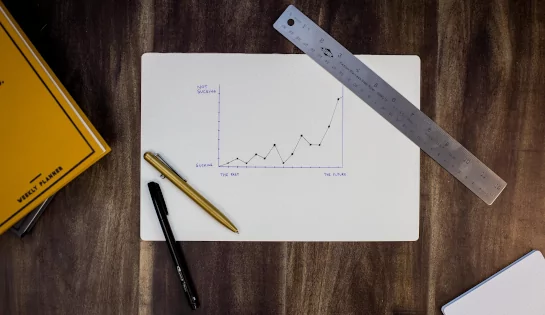Business owner’s need to have everything in sight all the time, thus they have to measure the critical key facts of their business. Which means you always need to know what is going on in your business. How could you do something like that? Well, usually we use reports in business operations, right? Yes, but that does not mean you know everything, as reports could also be misleading or just show you what happened in the past.
For example, if you review your monthly financial reports (Balance Sheet, Income Statement, Cash-Flow) you are looking at transactions that have already been completed. There is no way to see from these statements where your business will be in a month from now. That is because the accounting is recording past transactions. And that is totally okay.
If you only rely on your accounting data to run your business, it’s like driving your car by only looking into the mirror. You certainly would crash into someone or something. Therefore, you wouldn’t do this driving your car. But with our business we sometimes believe that if we look into the mirror long enough it will help us make the present or future better.
Still, there are certain numbers you could use from your accounting. Accounts receivables and payables, for example. Your accounts receivables are a bit like the fuel gauge of your car. They tell you how far you could get, when you compare them with your accounts payables. The payables are where you burn your gasoline or cash in this example. It’s a starting point to look into what is coming your way.
On the other hand, when you run a business, you like to know how your business is going to perform. Thus, you need to know your daily/monthly order intake. From order intake, you could calculate your future revenue. The future revenue allows you to calculate your future accounts receivables and the cash coming in. Sounds like a lot of stuff to set up, right?
It could be. However, it is worth spending the time on it. Imagine a plane wouldn’t have a dashboard in the cockpit, there would only be the control stick. Would you take a seat as a passenger in it? I guess not. But I have met many business owners not measuring the right things in their business. This is similar to sitting in a plane without a dashboard. How do you know where you are heading to, when you don’t have a dashboard in your cockpit? You just don’t know. You use guess work or your gut feeling. This may sometimes work, but in the long run this may fail.
Oh, I hear you saying that your business has an ERP System. Great, that’s good for you. The thing is, that most ERP Systems still lack reports that really measure what is most important for your business. You still need to set up these reports yourself.
Now, how could you find out what to measure and how often? That’s ease. Let’s start with a few questions on this one:
- What is the first thing that happens before you get sales?
- How long does it take from first prospect contact to sales?
- What are the main reasons your clients buy from you?
- Are you recording your daily order intake?
- Are there times when order intake increases above the average amounts?
And the list of questions could go on and on. But you may recognize, that it all starts with taking a look at your complete sales process. Additionally, you also need to review the products and services of your company, and the impact certain actions of yourself and/or your clients are having on your business performance.
It could be confusing at times. But it’s no rocket science. Therefore, you could keep it simple and as small as possible. Nowadays, a lot of things are recorded and analyzed. But it could be that you come to the same conclusion with much fewer data. The tricky thing about recording lots of data is that it might give you a feeling of being in control. From my experience, that’s a misleading belief. It’s more important to measure the critical, key facts.
It is much more helpful to record and measure the things that have an impact on your business performance. These things might be different from business to business. Still, there are many similarities. On top of the above, many business owners might only look at their revenue and the actual bank account balance. This again only provides a narrow view of the actual performance of a business.
At the end, it all comes down to knowing the most critical numbers of your business on a daily basis. When you measure the right things in your business very day, you are more able to have everything in sight. Furthermore, it allows you to make better decisions. Reviewing the most critical, key facts of the performance of your business may only take 10–15 minutes per day, if your reports are set up the right way.
Having everything in sight is one of the things I address with my clients in my 6-month one-on-one Coaching Package “Total Clarity”. This program takes business owners from not having a clue about their business performance and direction to having everything in sight in less than 30 minutes per day. Furthermore, the program also addresses, how to focus on what matters most, finding solutions to any business issue, verifying ideas as well as simple leadership.
Interested in working together? Book a Call.

